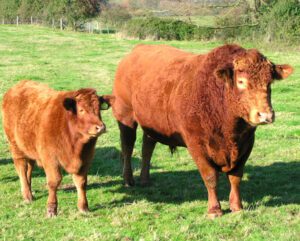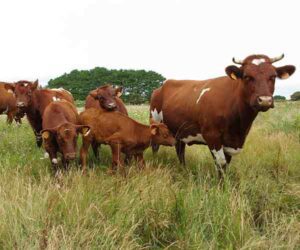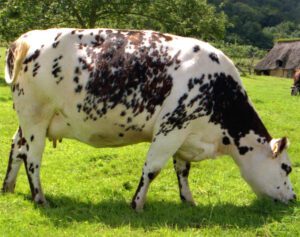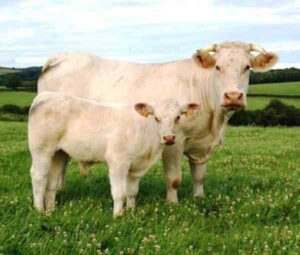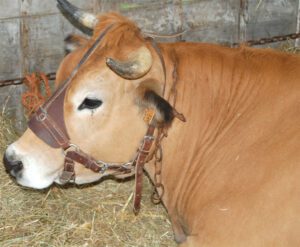The Ankole-Watusi cattle are a multipurpose breed of cattle. It is also known as Ankole Longhorn, and sometimes known as simply Ankole or Watusi.
It is a landrace breed, a type of Sanga cattle and originally native to East Africa. It’s an ancient breed and ancient rock paintings and depictions of these animals have been observed in the Sahara region and in the Egyptian arts and pyramid walls.
The Sanga breed has spread to the Kenya, Sudan, Uganda and other parts of eastern Africa, becoming the base stock of the indigenous African cattle populations.
The Sanga breed has most of the usual Zebu characteristics such as the pendulous dewlap and sheath, hump of variable size and the upturned horns.
However the Ankole-Watusi cattle have played a very important role in the lives of various African tribes such as Ankole, Bahima, Bashi, Bakiga, Kivu and Tutsi.
The breed provided currency, food and tribal status to the people of these tribes. The breed first arrived in the United States in the 1960s. Read more info about the breed below.
Ankole-Watusi Cattle Characteristics
Ankole-Watusi cattle are medium sized animals. They are easily characterized for their very large distinctive horns. Their horns can reach up to 2.4 meter from tip to tip and they use their horns for defensing and cooling by honeycombs of blood vessels.
Usually they have a straight topline, a sloping rump and sometimes have a neck hump. They can be either solid or spotted in color.
As a medium sized animal, average body weight of the mature Ankole-Watusi cows vary from 430-540 kg. And the mature bulls on average weight between 540 and 730 kg.

Newborn calves weight just 14 to 23 kg and remain small for several months. This low birth-weight makes Ankole-Watusi bulls useful for breeding to first-calf heifers of other breeds. Photo and info from Wikipedia.
Uses
Ankole-Watusi cattle are multipurpose animals. They are used for both milk and meat production. And also good for using for draught works and show purposes.
Special Notes
The Ankole-Watusi cattle are very hardy and active animals. They are very well adapted to their native climates and also can survive in some other places.
They are excellent grazers and are able to use poor-quality forage and limited quantities of feed and water. This low water and feed survival abilities have allowed them as a breed to not only survive for centuries in Africa, but also become established in Australia, Europe, North America and South America.
The calves sleep together during the day with an ‘auntie’ cow nearby for protection. And the herd members sleep together at night with the calves in the center of the group for protection.
The Ankole-Watusi cows are grazed all day under traditional management for milk production, then brought home to their young calf. Then the calf are allowed to suckle briefly to stimulate milk letdown, and then the cows are milked.
The calf suckle further after hand milking has finished and then are separated from their mother again and the whole process is repeated in the morning again. The cows are average milk producers but their milk is rich in high butterfat content.
Usually milk of the Ankole-Watusi cows contain about 10 percent of fat. For this reason some dairy farmers have used crossbred Ankole-Watusi cows in their hers to boost the butter fat levels.
The breed is also good for meat production and also good for draught works and show purposes. However, review full breed profile of the Ankole-Watusi cattle in the following chart.
| Breed Name | Ankole-Watusi | |
| Other Name | Ankole Longhorn, Ankole or Watusi | |
| Breed Purpose | Milk, meat, draught, show | |
| Special Notes | Well adapted to native climates, very good for meat production, good for milk, grow faster, cows are excellent mothers, excellent quality milk, very hardy | |
| Breed Size | Medium | |
| Bulls | 430-540 kg | |
| Cows | 540-730 kg | |
| Climate Tolerance | Almost all climates | |
| Coat Color | May be solid or spotted | |
| Horned | Yes | |
| Milk Yield | Average | |
| Rarity | Common | |
| Country/Place of Origin | East Africa |

